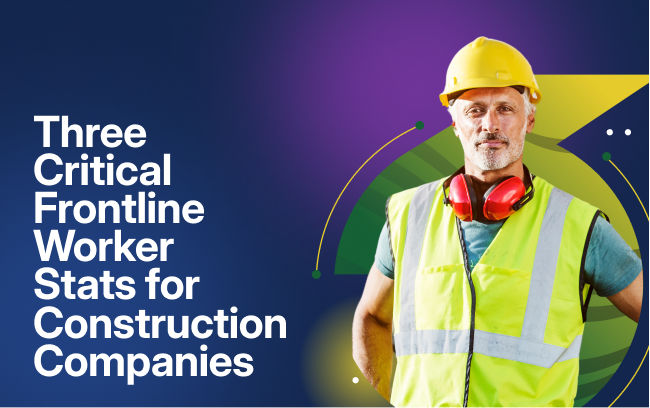10 November 2020
7 Min Read

How can virtual events connect learners better?
Facilitating and participating in an event has never been more different. With most live events canceled and many shifting to online spaces, vendors and participants are still working out how to alter their behaviors and expectations to achieve the human connections that events are known for.
In this episode of The Learning Xchange, Matthew Brown, the VP of Learning and Brand Success at Schoox, shares his thoughts on the pros and cons of virtual events. He discusses what’s working, what isn’t, and what more we can do to help people connect digitally.
Hit play to listen to this episode of the podcast below:
Or, find out more by reading on.
Why in-person events need to adapt to be successful virtually
If some of the pillars of your year are career-related events, you are not alone. Summits, conferences, and expos dominate workplace calendars, and the cancellations for many this year has left some people unsure about how they’re going to replace these annual milestones.
Most of these events are overcoming the challenges of hosting in a physical workplace by transitioning into a virtual one. This pivot is the necessary answer to some problems, but it is raising new issues.
For the learning and development industry, the challenge is an exciting one. With experience moving the industry’s day-to-day online, it seemed like a swift transition to move the live learning and development events into a digital environment.
Trainers had already learned that making changes to their training courses was essential to effective virtual delivery. Facilitators also need to evolve their online delivery to generate the same level of engagement from their participants.
The reasons that in-person training needs to change for digital learning are the same as the reasons why live events need to adapt to the virtual environment. The dynamic of live vs. virtual is drastically different.
The challenges facilitators face with virtual events
In a physical space, there are many cues that facilitators can leverage to ensure that training is making an impact on the participant. These cues can be subtle, psychological ones, like body language, to more obvious ones such as the number of responses when you ask a question.
Expert trainers have spent their careers learning how to use these cues to adapt their training. These adaptations could be speech-based, such as repeating some information for clarity, or they could be physical changes. These range from dividing learners into teams to getting people moving around a room and introducing themselves one by one.
The ability to facilitate activities in response to these cues are what make successful trainers and events. But how can these be adapted for the digital space?
How to encourage interaction in a virtual event
The virtual space strips most of these cues from the event. Facilitators can’t rely on reading the room in the same ways they do physically, so they need to implement new tactics to generate responses.
Some software uses interactive features to increase the feedback facilitators receive. These include:
- Comment and response boxes
- Like/dislike buttons
- Emoji reactions
- Multiple choice answers for quizzes and surveys
- Question submission for Q&As
It’s important to note that not all virtual events will utilize the same features. If you are part of a virtual event, you should check with the organizers what features their software has and find out how you can make them work for you.
Audience engagement has changed drastically as online interaction’s novelty continues to wear off, and “zoom fatigue” sets in. Facilitators and virtual events are using trial and error to find what software and features work for them and what keeps their audience engaging.
The mistake to avoid with digital delivery
It can be tempting to reuse a previously well-received e-Learning structure to deliver new material. However, this is a mistake. While you might think that your learners will take comfort in knowing what to expect from your training, it’s wrong to assume that everyone can learn effectively through repeated delivery–even if the content changes.
As people become more fatigued with learning and engaging in a digital space, it’s more important than ever to evolve your training, including how you deliver it continually. This way, you can renew connections with your learners instead of letting them go stale.
Why the learner experience is key to a successful virtual event
Your learner’s experience should be the core of your virtual event. It’s the human connections that make live events what they are, and they’re a big part of the learner’s experience. Keeping in mind the learner’s overall experience at a virtual event goes beyond your event’s content.
Ultimately, the most significant change to the learner’s experience is that they are no longer in a physical space with other learners. It’s important to take into account the behavior changes that occur when environments change. With all virtual event attendees remote, there are more changes to the learner’s experience than you might know.
Your psychology changes and adapts to your environment. Behaviors and attitudes that you display at work might be different from those you display at home. You might become shy and reserved at a live conference around strangers but be the loudest person at a restaurant with your friends. You might be comfortable talking to a live audience of 100 people but struggle to present to your smartphone camera.
When you attend a live conference or an expo, everyone is in the same environment. There are cultural and social factors that change your behaviors, and there are expectations that level the playing field for everybody. But when you take an event online, these environmental factors are less predictable and vary from attendee to attendee.
Some people might attend from a coffee shop or a workspace, and many people will attend from home. They might have childcare or technological interruptions that affect them from listening to the speaker. The combination of unusual factors could also mean that they’re unable to get into an effective learning headspace.
How to enhance your approach to learner connection
Depending on what software you use, you may have a window into people’s situations. If you frequently use video conferencing software, you might understand more about someone’s home office space, or remote working environment, which can give you clues about how you need to adapt your delivery.
Do your participants have interruptions? If so, would an event they can pause suit them better? Do they have technology issues that might require them to download a document rather than engage with it in an online space? Do they have accessibility challenges that mean they need to access the virtual event in a different way?
The learner experience goes beyond what you include in your training or virtual event. It is the situation that the participant is in at the time of learning and the internal and external factors that affect it.
At live events, there is far more control over these factors. Facilitators are aware of any changes to them and adapt accordingly to ensure that the event is the most successful it can be for the learner. But as this physical disconnection continues and the industry faces more virtual events, trainers need to remain mindful of their participants’ learning situations.
By putting the learner’s experience first and considering the challenges they may face, facilitators can keep learners engaged, host more successful virtual events and make space for better human connections.
Thank you for reading about The Learning Xchange, the podcast from Schoox. The Learning Xchange is our weekly feature that focuses on the ever-changing landscape of online learning and talent management. It’s available to access here, on our website, as blogs or podcasts, or as video episodes on YouTube.
RELATED RESOURCES



